Do you want the simplest way to make Fermented Fruit Juice Organic Fertilizer in as little as 5 days? Then our easy-to-follow guide is for you.
Fermented Fruit Juice, or FFJ, is a nutrient-rich fermented solution extracted from ripened fruits. It is used primarily as an organic fertilizer in various forms of Natural Farming. However, it also has nutritional benefits for livestock and humans.
FFJ is a valuable ingredient in many Korean Natural Farming recipes. It is revered for its ability to boost and enhance fruits and general plant health.
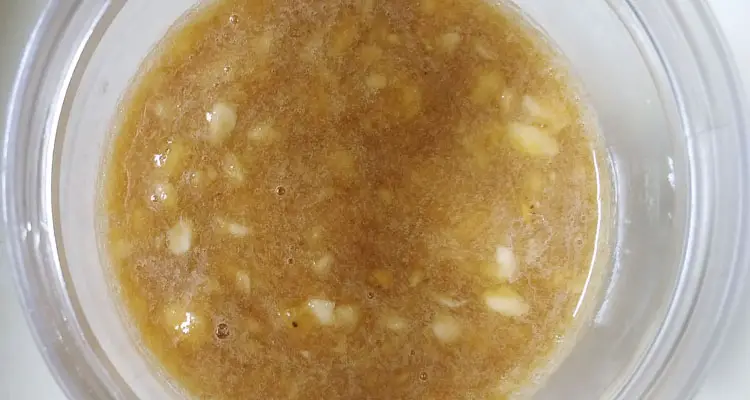
In this guide, you’ll learn:
- The Materials Needed To Make FFJ
- How To Make FFJ (Step By Step)
- How To Use Fermented Fruit Juice
- Benefits Of Fermented Fruit Juice
- Disadvantages Of FFJ Fertilizer
Let’s get started!
Materials Needed To Make Fermented Fruit Juice Fertilizer
Here is a list of materials and equipment you’ll need to gather to make an FFJ Fertilizer. I did not list exact quantities or sizes. However, ensure that you adjust your measurements according to your needs.
| Items | Notes |
| Ripe Fruits | Slightly overripe but not spoiled works best. |
| Brown Sugar | Dry molasses can work, but avoid liquids. |
| Sharp Knife | A sharp chef’s knife is ideal. |
| Cutting Board | It will be handy to dice fruit |
| Scale | An Analog or digital kitchen scale will do |
| Mixing Bowl | Easier To handle ingredients |
| Wide-mouth Container | Glass or plastic bottles will do. |
| Wooden Spoon | Can use your hands, but this is cleaner. |
| Paper Towels | To allow air into the mixture |
| Rubber Band / String | Large enough to fit the mouth of the container |
| Funnel | Much easier to transfer the mixture to a bottle |
| Storage Container | Glass or plastic been bottle |
| Strainer | Fine plastic mesh or sieve cloth |
| Cupboard / Box | Provides a dark area to ferment and store solution |
Optional: You can also use a blender to finely chop the ingredients. However, this is not necessary, but feel free to experiment. Use a disposable food-safe glove to avoid contamination.
How To Make Ferment Fruit Juice (Step By Step)
In Korean Natural Farming, brown sugar extracts the nutrient from the ripened fruits. The sugar creates the necessary osmotic pressure to draw the juices out of the fiber while providing food for the microorganisms as they multiply.
Follow the step-by-step instructions below to create your first batch of Fermented Fruit Juice organic fertilizers.
Step 1: Collect Ingredients And Utensils
You will need two main ingredients to make Fermented Fruit Juice: fruits and brown sugar.
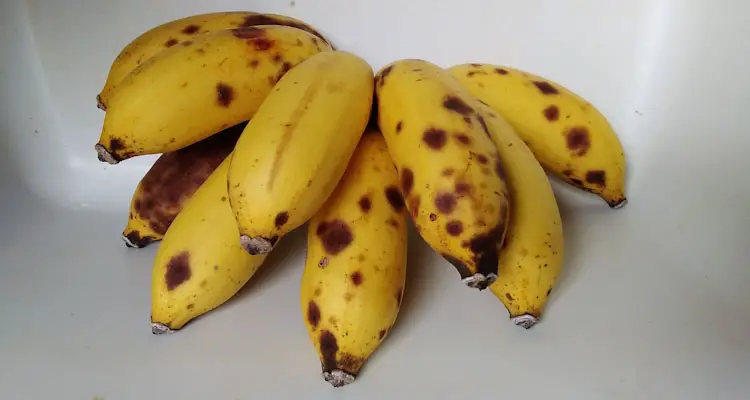
Collect some well-ripened fruits found in your area. Preferably those really sweet, such as Bananas, Mangoes, or Papayas. You can pick them from the tree or off the ground, but avoid damaged or rotting fruits.
Purchase a packet of brown sugar. This process requires a 1:1 ratio, meaning you’ll need 1 Lb sugar for every 1 Lb fruit, with a bit extra to spread over the top.
Collect and clean your materials and equipment. Ensure you clean them properly to avoid contamination. Sharpen your knife and prepare the area you intend to store the mixture afterward.
Ideally, you should get everything you need before you start to ensure a smooth process.
Step 2: Cut, Weigh, And Mix Fruits
Peel and cut the fruit into small pieces using a sharp knife and cutting board. You can use the skin, but we avoid this since we also drink FFJ as a tonic.
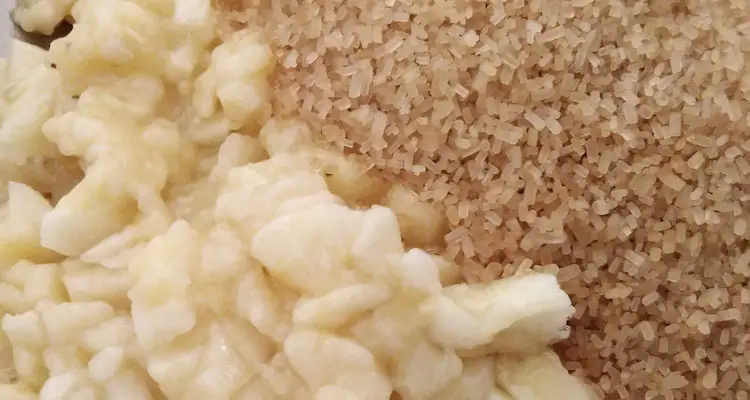
Weight the fruit and place it into a bowl. Weigh an equal amount of sugar and add it to the bowl. Mix the sugar and the fruit thoroughly until it forms a thick syrup-like substance.
You can use a wooden spoon or your hands to mix the ingredients. However, if you intend to use your hands, ensure you wash them properly, or use a pair of food-safe gloves.
Note: Some people choose to use a blender, but it's not necessary unless you have vast quantities of fruits.
Step 3: Ferment Fruit-Sugar Mixture
Pour the mixture into a wide mouth jar or bottle until it reaches about 2/3 the height. Clean up any spillage. You can use some white vinegar to wipe the outside of the bottle. This will deter ants to an extent.
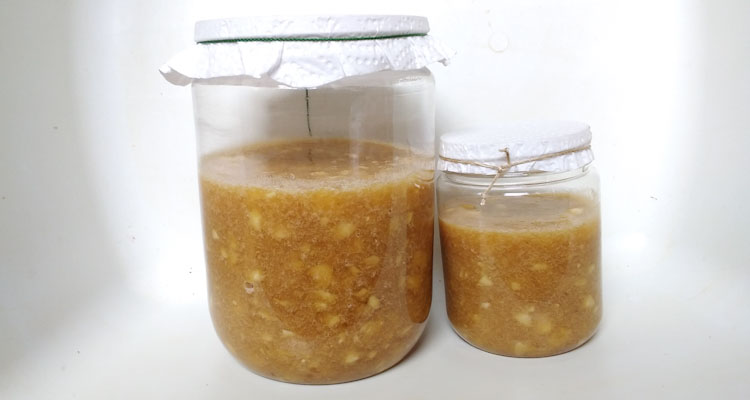
Cover the bottle with a piece of tissue or other porous materials. I prefer to use paper since it dries quickly in case of spills, whereas cloth has the tendency to become moldy.
Tie the cover in place with a rubber band or piece of string. Alternatively, you can use a piece of elastic and get the best of both worlds.
Place the bottle into a cool dark area, such as a cupboard or box. Allow it to ferment for 5 to 7 days, depending on the temperature.
You can look at the bottle periodically but do not stir its content. Initially, you should notice tiny bubbles forming into the solution, becoming larger as the days progress.
Step 4: Strain And Store FFJ Solution
By day 7, the fruit solids would have floated to the top of the solution, separating from the FFJ. You might also notice some mold forming on the surface.
Remove the solid fruit material from the top of the solution using a spoon, scooping out any mold. Then strain the remaining solution into jars or bottles for storage. You can use a funnel to make this easier.
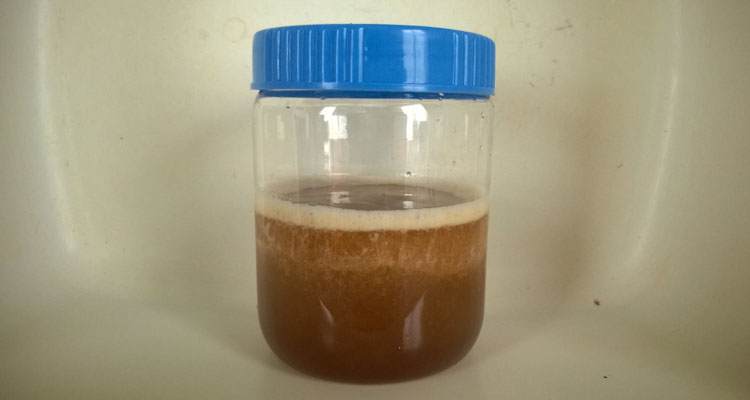
You can add some more sugar to the solution if you wish. Then cover it with a paper towel secured by a string. If you choose to use the lid, remember to open it periodically.
Place the FFJ in a cool, dry, dark, and well-ventilated cupboard or cardboard box. Ideally, you should store it in smaller bottles to avoid repeated opening of larger containers.
Ferment Fruit Juice Can last a few years if prepared and stored correctly. However, it will be used much sooner since we use it extensively to prepare KNF inputs.
How To Use Of Ferment Fruit Juice Fertilizer
FFJ is a nutrient-rich solution that contains the nutrients of the fruit material it is made from. For example, FFJ made from bananas will be high in Potassium and Calcium, making it ideal for fruiting plants.
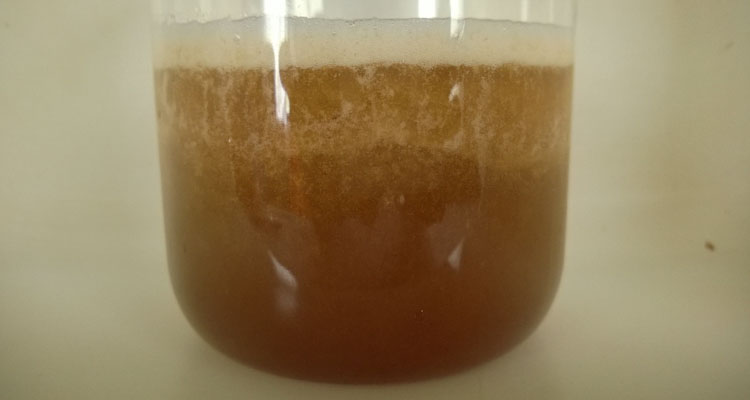
In Korean Natural Farming, The Nutritive Cycle guides when and how much Fermented Fruit Juice should be applied to a specific plant. Typically, you should dilute FFJ in a ratio of 1:1000 in water and use it as a foliar spray.
However, to make the best use of FFJ, Mr. Hankyo Cho suggested some recipes to apply to plants at various stages of the Nutritive Cycle. We included an example of these recipes in our Nutritive Cycle Theory article.
Note: Fermented Fruit Juice is also combined with other solutions such as alcohol to create concoctions, such as Aromatic Insect Attractant (AIA).
What Are The Benefits Of Fermented Fruit Juice Fertilizer?
Fermented Fruit Juice is a versatile solution used primarily as a fertilizer by organic farmers. However, it has many inherent benefits used in Korean Natural Farming.
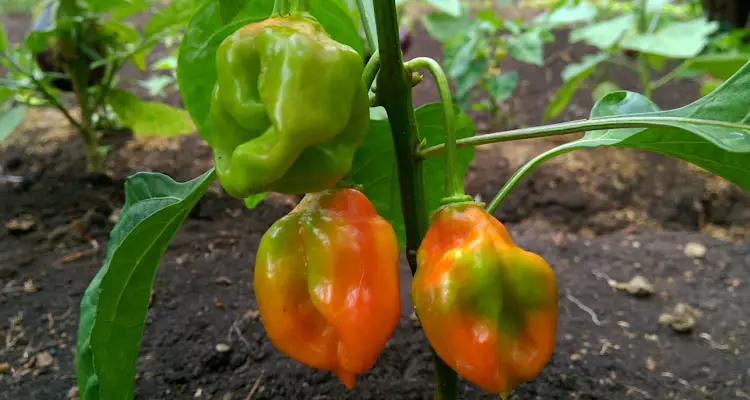
FFJ is rich in Potassium, Calcium, nutrients, and enzymes unique to the fruit used. As a result, the plant can absorb and better use nutrients, boosting production.
Fermented Fruit Juice contains various activation enzymes, making it a valuable addition to animal feed and bio-fertilizer preparation. This is evident by its extensive use in KNF recipes.
Some people view FFJ as artificial honey and use it as a tonic for livestock and human consumption. However, you should follow food safety guidelines to avoid contamination.
Basically, it can boost both plants and animals if used correctly.
Disadvantage Of Fermented Fruit Juice On Plants
Fermented Fruit Juice contains the nutrients, enzymes, and other chemical compounds from the source material. However, certain plants contain organic compounds that inhibit other plants growth.
For example, FFJ made from citrus and grape works perfectly on their individual plants but retard the growth of other crops. As a result, they should only be applied to their respective plants.
FFJ contains the nutrients and minerals found in ripe fruit and is tailored for the reproductive stage of the Nutritive cycle. As a result, it should not be applied to plants during vigorous vegetative growth stages.
Final Thoughts
Fermented Fruit Juice Fertilizer is one of the most popular bio-fertilizers used in Korean Natural Farming. Surprisingly, it owes most of its prestige to its alternative uses as a rejuvenating tonic for livestock and humans.
FFJ is revered for its sanitizing properties and is often sprayed in KNF chick coops and other animal housing. It is also combined with alcohol to create AIA used to attract common pests, diverting them from garden crops.
However, the effectiveness of Fermented Fruit Juice depends on the correct preparation and use of the solution in unison with the plant’s Nutritive Cycle.
Related Questions
How Long Does Fermented Fruit Juice Last?
Fermented Fruit Juice can last several years once stored correctly. However, this is unlikely unless it is forgotten due to the demand for FFJ in natural farming recipes and applications.
What is the difference Between Fermented Fruit Juice And Fermented Plant Juice?
Fermented Fruit Juice (FFJ) is made from ripened fruits and contains nutrients needed to enhance fruit production and ripening. In contrast, Fermented Plant Juice (FPJ) is made from plant material and green fruits. It provides a more balanced nutrient profile suitable for use on plants in earlier stages of development up to flowering.
References
Cho’s Global Natural Farming. Fermented Fruit Juice. cgnfindia.com. Access May 2022
Reddy, Ronhini. Cho’s Natural Farming. South Asian Rural Reconstruction Association. 2011 (PDF)

